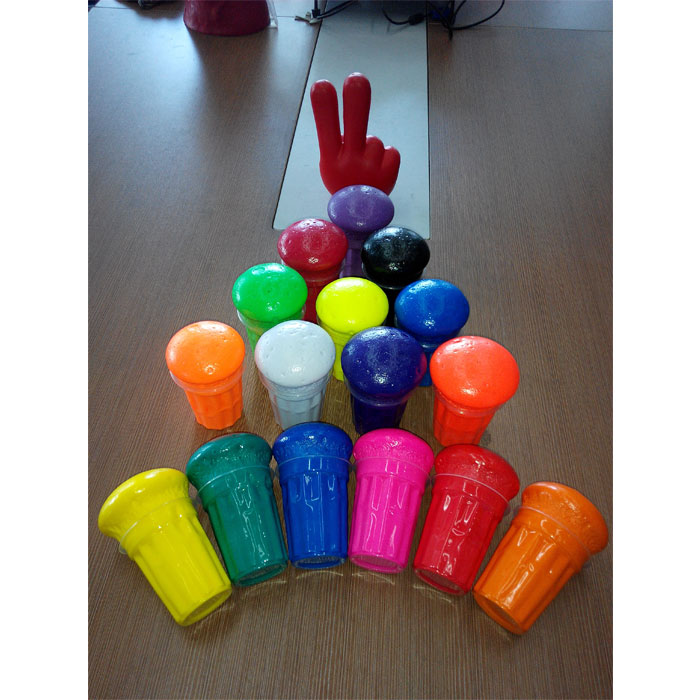- English
- Español
- Português
- русский
- Français
- 日本語
- Deutsch
- tiếng Việt
- Italiano
- Nederlands
- ภาษาไทย
- Polski
- 한국어
- Svenska
- magyar
- Malay
- বাংলা ভাষার
- Dansk
- Suomi
- हिन्दी
- Pilipino
- Türkçe
- Gaeilge
- العربية
- Indonesia
- Norsk
- تمل
- český
- ελληνικά
- український
- Javanese
- فارسی
- தமிழ்
- తెలుగు
- नेपाली
- Burmese
- български
- ລາວ
- Latine
- Қазақша
- Euskal
- Azərbaycan
- Slovenský jazyk
- Македонски
- Lietuvos
- Eesti Keel
- Română
- Slovenski
- मराठी
- Srpski језик
Les principes de base de la méthode de traitement de moulage de sélection d'élastomère de polyuréthane
2021-08-11
Polyuréthane elastomer formed by the polymerization reaction of diisocyanate and active hydrogen compound, the rigid segment containing urea group composed of diisocyanate and diamine chain extender, the glass transition temperature is much higher than room temperature, and it is glassy at room temperature. Subcrystals or microcrystals form the plastic phase; flexible segments of polyether or polyester are gathered together to form the matrix or matrix of the polyuréthane rubber. Because its glass transition temperature is lower than room temperature, it is called the rubber phase. The microphase separation of the polyuréthane elastomer makes the polyuréthane elastomer have the advantages of good wear resistance, wide range of hardness, high strength and high elongation, large load supporting capacity, good shock absorption effect and excellent oil resistance. Choosing a suitable molding and processing method can maximize the performance of polyuréthane elastomers and prepare various polyuréthane elastomers with excellent properties, which are widely used as plastics, rubber, fibers, adhesives and coatings, and even as functional polymer materials. Such as medical polyuréthanematériaux.
1.1 Principes généraux de sélection des méthodes de mise en forme
(1) Le traitement de moulage consiste généralement à faire fondre ou à déformer un composé polymère à l'état solide (poudre ou granulaire), à l'état de pâte ou de solution, et de former la forme souhaitée à travers un moule, et de maintenir la forme qui a été obtenue, et enfin d'obtenir le produit. processus de fabrication.
(2) Flux de traitement de moulage commun : « La méthode de formation du mélange de composés polymères une et deux fois pour produire des produits ; « La méthode de formation du composé polymère pour produire des produits en une seule fois ; « Méthode de production de produits à partir du mélange de monomères en une seule étape – Méthode de production en une étape du mélange d'oligomères.
(3) Performances de traitement et ses facteurs d'influence : « l'expressibilité, dans l'extrudeuse, le canon de la machine d'injection, les rouleaux de la calandre et le moule, lorsque le matériau est déformé par extrusion, la forme du matériau est obtenue et la capacité maintenue. Ses facteurs restrictifs : viscosité à l'état fondu, structure de l'équipement de traitement, rhéologie de la masse fondue et débit de fusion. â'¡Moldability, dans le processus de moulage sous l'action de la machine d'injection, de l'extrudeuse et de la machine de compression, le matériau est déformé sous l'action de la température et de la pression et la capacité d'être moulé dans le moule. Ses facteurs restrictifs : rhéologie, propriétés thermiques et autres propriétés physiques et mécaniques et réactivité chimique des composés polymères. â‘¢Extensibilité, en calandrage ou étirage, le matériau se déforme par calandrage ou étirage dans un ou deux sens. Ses facteurs contraignants : la plasticité du matériau et l'effet d'écrouissage. â'£ filabilité, la buse lors du moulage par extrusion, la capacité du matériau à former des fibres solides continues par moulage. Ses facteurs restrictifs : rhéologie, viscosité et résistance à l'état fondu, stabilité thermique et stabilité chimique.
1.2 Principes généraux de sélection des méthodes de moulage et de transformation pourpolyuréthaneélastomères
Polyuréthane elastomer molding processing system is divided into liquid system and solid system. On the basis of the rapid polymerization reaction of diisocyanate and active hydrogen compound, the molding processing method is conducive to the microphase separation of the polyuréthane elastomer. , Liquid system, polyuréthane casting glue can be processed by casting (manual casting, centrifugal casting and vacuum casting), reaction injection molding, spraying, knife coating, roller coating, laminating, laminating, bonding, vulcanizing, pasting and rubbing ; Solid system, polyuréthane compound rubber can be vulcanized and laminated with mold, polyuréthane thermoplastic can be used with thermoplastic, hot injection, calendering, blow molding, spinning and lamination.
1.3 Le principe de correspondance des types de base et des méthodes de traitement de moulage
Polyuréthanel'élastomère est un haut polymère entre le plastique et le caoutchouc en termes de module. Il comprend principalementpolyuréthane compound rubber, polyuréthane cast rubber, polyuréthane water emulsion and polyuréthane thermoplastic. Polyuréthane leather, polyuréthane adhesives, polyuréthane coatings, polyuréthane compounds, polyuréthane casting glues, polyuréthane fibers, polyuréthane water emulsions and polyuréthane thermoplastics are all derived from the above four types of glue. The molding and processing methods of polyuréthane compound rubber, polyuréthane water emulsion and polyuréthane thermoplastic generally belong to the molding processing methods of rubber, coatings and plastics.
1.4 The use of polyuréthane elastomers and the matching principle of production continuity and molding processing methods
Polyuréthane elastomer molding and processing methods are matched with the use of polyuréthane elastomers, taking into account the continuity of production. For example, polyuréthane leather molding methods usually use polyuréthane casting adhesive or foaming layer, polyuréthane water emulsion and polyuréthane thermoplastic as the surface layer; also available Polyuréthane thermoplastic and polyuréthane water emulsion are used as leather separately, which are based on the basic rubber molding processing method, supplemented by foam molding processing, usually calender molding processing method is selected. Polyuréthane paving materials are made of polyuréthane casting glue, mainly due to the large product shape and low precision requirements. Medical polyuréthane materials have good chemical stability, tissue compatibility, and resistance to biological aging, so the molding process uses dip coating, pouring and coating methods.




